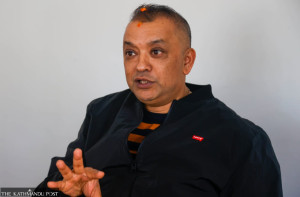Miscellaneous
My Limited ‘Liberal Arts’ Education
When I arrived at the campus of Brandeis University (located just outside of Boston, Massachusetts, United States) in August 1984 to start my undergraduate education, I knew only one thing about liberal arts education.

Pratyoush Onta
When I arrived at the campus of Brandeis University (located just outside of Boston, Massachusetts, United States) in August 1984 to start my undergraduate education, I knew only one thing about liberal arts education. I had learned, mostly from word-of-mouth from seniors who had been to such colleges in the US, that no matter what I chose to pursue as my major subject of study in college, I would also have the opportunity to study quite a few other subjects as well. Other than having this choice, I knew nothing about the philosophy behind liberal arts education, nor how it was variously organised in different types of higher education institutions in the US.
In the preceding two years, I had been studying at Amrit Science College (ASCOL) in Kathmandu in what used to be colloquially known as the Intermediate in Science (ISc) programme. I was a student in the ‘physics’ group. My main subjects of study were physics, math and chemistry and I was also required to take some English and Nepali along with one paper on Nepal Parichaya. Like many of my friends and peers in that group, I hoped to pursue an engineering degree somewhere. The only choice that was available to me as an ISc student was at the beginning: the option to join the ‘biology’ group or the ‘physics’ group. By choosing to join the latter in 1982, I had, for all practical purposes, abandoned the possibility of pursuing a medical degree. Subsequently, there were no other courses to choose from.
In the fall of 1983, I applied to several colleges in the US. In spring 1984, I was accepted by Brandies which also offered me a full scholarship from its Wien International Scholarship Program, whose sole purpose was to bring non-American students to Brandeis.
I was not sure what I would study there at Brandeis but as I prepared to leave for the US, I told my friends and relatives that I was going to study ‘Computer Science’. Back then, computer science was a new subject for engineering students. While studying at ASCOL, I would spend a lot of time organising activities at the Godavari Alumni Association (GAA) where late Fr Eugene Watrin had a computer but he would not let us touch it (“you might spoil the computer if you press the keyboard too hard,” he used to tell us). Hence although I had seen a computer in Kathmandu, I had never used one. Furthermore, I had no idea what studying computer science really meant.
On my way to Brandeis, I stopped in San Francisco to visit a family friend who had once worked with my dad in Nepal in the early 1970s. He is an applied mathematician and told me that if I was not sure of what I wanted to study, I should start off by exploring some other subjects along with computer science.
That is exactly what I did. During my first semester at Brandeis, I took a course in computer programming in BASIC, a course on discrete mathematics that was required for computer science majors, an introductory course on economics and a course in the humanities (“The Human World: Antiquity”). I took the course on economics to explore that subject, having never studied it before but it also fulfilled a distribution requirement in the social sciences.
The course on humanities doubled up as a freshman writing seminar course as well. In taking an English language placement exam upon arrival at Brandeis, I was told that my English writing was good enough and hence I did not require a remedial course in writing. However, I had to fulfill the mandatory Freshman Writing Seminar requirement by either taking a separate course or adding it to a humanities course. Not knowing fully what I was getting into, I chose the latter which meant I did the equivalent of two courses but got credit for only one! This humanities course and the one I took the following semester fulfilled the humanities distribution requirement.
To graduate from Brandeis University then, apart from fulfilling the requirements of the major subject of one’s study, which meant taking some eight or more courses in that subject, every student had to also fulfill what were distribution requirements. Every student had to take two courses in the humanities, two in music and arts, two in the social sciences, two in the basic sciences (including math) and one in history. In addition, every student had to fulfill the freshman writing requirement. Also every student had to take two physical education classes and pass the swimming test. This is how the liberal arts education idea had been organised at Brandeis in the mid-1980s.
During the second semester, I took the second semester course on calculus (I skipped the first semester course since I had already done that at ASCOL), the second semester of discrete math, an introductory course on macroeconomics, a course focused on elements of art design and a fifth course in the humanities which was titled “Women in Patriarchal Cultures.” While the first semester humanities course focused on texts that formed part of the Western classics (Iliad and the like), my second humanities course focused on some important works of 20th century Anglo-American feminist writers. Taught by the feminist scholar, the late Andre Collard, we read Virginia Woolf’s A Room of One’s Own, Adrienne Rich’s collection of poetry The Dream of a Common Language and several other works.
During my third semester, I took two courses in computer science, a course on intermediate calculus and a sociology course on ‘birth and death’. During the fourth semester, I took one computer science course, the second semester course on intermediate calculus, a course on microeconomics and an introductory course on music. At the end of this semester, I decided I did not want to study computer science as my major subject. Instead economics was going to be my major and I planned to take further math courses to better prepare myself for graduate school in economics.
Hence in the last two years of my study at Brandeis, I took courses in advanced micro and macroeconomic theory, on comparative economic systems and international trade theory. I also took advanced calculus, real analysis and a year-long course in mathematical statistics. To fulfill the remaining distribution requirements, I also took a course on the philosophy of 20th century physics and a history course on European Imperialism. I also took an anthropology course on ‘Development and the Third World’ mostly because it was being taught by an interesting visiting professor.
All in all, I took four courses in computer science, and nine courses each in mathematics and economics. Apart from those 22 courses, I took two courses in the humanities, two in music and arts, one each in sociology, anthropology, history and physics. I did a double-credit thesis in economics and that counted as two courses. Hence I had taken 32 courses over the course of eight semesters by the time I graduated from Brandeis in May 1988.
I was grateful for the opportunity to have had taken a mix of courses in Brandeis. In particular, I had greatly enjoyed the two courses in the humanities and the course each in sociology, anthropology and history. I had learnt some things about the many different ways in which we try to make sense of the world in which we live. That learning had come from the assigned readings, the classroom lectures by some very dedicated teachers, section-size discussions with teaching assistants and from the many commentary and researched writings we had to produce for each of these courses. Compared to what I was studying at ASCOL or what I might have studied at an engineering college, I definitely had a better exposure to different disciplines and discipline-practitioners at Brandeis.
In retrospect, I could have done much better. In one formulation of what counts as liberal arts education, the study of languages, literature, philosophy and history (“the humanities”) is considered more important than the study of the social science disciplines. By this count, mine had been a relatively poor liberal arts education given the courses I took as discussed above. Brandeis had a good history department that offered various courses in the histories of North and South America, Europe and the Middle East. It also had some faculty members who had produced thematic histories of the regions of the world of which they were experts. I could have benefited from exposure to such scholarship even though Brandeis offered no courses related to South Asia per se when I was a student there. A course on intellectual history would have been good too. In addition, I could have taken at least a course or two on western philosophy and some courses in comparative literature.
Even in the social sciences, my education had been weak. Brandeis had a strong sociology department. I could have easily taken more courses in social theory, both classical and modern. It also had a political science department in which I could have taken a course or two on European political thought. Same was true for course offerings in anthropological theory of, say, complex societies. To do all that, I would have had to take fewer courses in economics and mathematics but that would have been certainly worth it.
Just attending a liberal arts college is no guarantee that you will get an adequate education in the liberal arts. Many circumstances influence the particular experiences of a liberal arts education for a specific student.
Had I not been obsessed with computer science initially or had I not taken too many math courses later, my liberal arts education at Brandeis would have been a stronger one.
The author tweets @pratyoushonta




 20.12°C Kathmandu
20.12°C Kathmandu










